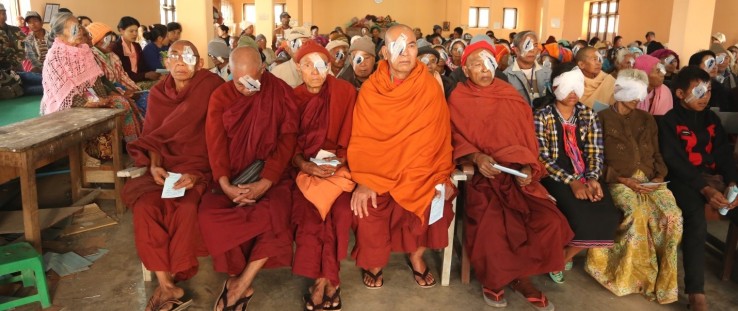 Monks sit among a group of people waiting to remove their bandages following cataract surgery.
Himalayan Cataract Project
Monks sit among a group of people waiting to remove their bandages following cataract surgery.
Himalayan Cataract Project
 Monks sit among a group of people waiting to remove their bandages following cataract surgery.
Himalayan Cataract Project
Monks sit among a group of people waiting to remove their bandages following cataract surgery.
Himalayan Cataract Project
Approximately 285 million people around the world are visually impaired, 90 percent of whom live in developing countries. Despite data from the World Health Organization (WHO) that shows 80 percent of all visual impairment may be prevented or cured, a staggering 228 million people lack access and resources to treat the condition. Visual impairment impacts everyday lives and reduces the possibility of a productive future.
Paing Phyo Oo, a 16-year-old from Hak Vae village in Burma, dropped out of school because he could not see and was unable to attend classes. Paing was lucky; he participated in a Himalayan Cataract Project (HCP) campaign that changed his life. HCP undertakes high-volume cataract campaigns in rural areas where surgery to cure visual impairment takes five minutes and costs only $25, allowing HCP to perform hundreds of surgeries per day.
Paing regained his sight and wrote a letter of thanks to his doctor: “I’ve had poor vision since I was young and completely blind when I was in the 7th [grade]. I had to stop my school for two years because of my poor eyesight. After eye operation, I regain my vision and continue my school. I am in the 8th [grade] now. My life becomes much better after eye operation. I really appreciate my doctor and would like to send my remembrance.”
HCP’s work is full of stories like these—lives changed by a simple medical intervention. Founded in 1995 by Nepalese ophthalmologist Dr. Sanduk Ruit and American ophthalmologist Dr. Geoffrey Tabin, HCP has cured almost all treatable blindness in Nepal. The project has since expanded throughout the developing world, most recently to Burma.
Working out of the Tilganga Institute of Ophthalmology in Nepal, HCP developed a method of quality, low-cost cataract surgery that has made remarkable strides in treating blindness in communities challenged by both the absence of equipped hospitals and the inability of impoverished patients to afford such treatment. To date, HCP has treated over 5.2 million patients, providing over 445,000 surgeries and sharing the organization’s innovative “Nepal Method” of cataract surgery with hospitals and universities around the world.
Since 2003, USAID’s Office of American Schools and Hospitals Abroad (USAID/ASHA) has awarded HCP $6.6 million to strengthen operations in Nepal, Ghana and Burma. USAID has been instrumental in purchasing the infrastructure and equipment for HCP, allowing them to undertake the cataract campaigns and equip the hospitals that have made them so successful.
With USAID assistance, HCP most recently moved to Burma. According to a 2005 Meiktila Eye Study, 8.1 percent of Burmese citizens suffer from blindness and 32.9 percent suffer from visual impairment. With the political transition from a military junta to a civilian-led government, medical providers from the region are now able to provide much-needed assistance. The CEO of HCP, Job Heinz, explains that two events allowed HCP to work in Burma.
“The first,” he said, “is [when] the Ministry of Health [specifically, the director general of Burma’s health services] asked Dr. Sanduk Ruit, founder and medical director of the Tilganga Institute of Ophthalmology in Nepal, to help strengthen the quality of eye care in Myanmar through training and outreach services. Dr. Ruit and Tilganga’s system of eye care delivery adapted for low-resource areas are very well known, and their expertise is often requested.
“After the Tilganga clinical team completed its assessment, we developed a program including outreach training programs in Myanmar and specialized ophthalmic training for the Yangon Eye Hospital (YEH) staff in Nepal. At the same time, USAID opened its Burma mission as the country was opening up, making it easier to execute programs. USAID provided $18 million—more than any other donor—to support the November 2015 elections that resulted in the first civilian-led government in 50 years.”
HCP is undertaking multiple programs to strengthen the eye health system in Burma. HCP provides fellowships, purchases equipment for training and treatment, and carries out cataract campaigns and workshops. HCP also supports two 12-month subspecialty fellowships focusing on the cornea and retina for Burmese doctors at Tilganga in Nepal and in the United States. These are all helping to improve the Burmese-led health reforms.
Burmese Dr. Aye Chan just completed his fellowship at Tilganga. “The cornea fellowship in Nepal gave me new knowledge and skills and helped a lot in managing corneal and external eye diseases in Myanmar,” Chan says. “Small Incision Cataract Surgery (SICS) training is also useful for my practice, where high-volume, low-cost cataract surgery with sustainable quality is needed.”
Furthermore, HCP provides state-of-the-art equipment to support the trainee subspecialties and other clinical disciplines critical to modern eye care in Burma. Since 2013, HCP has supported three cataract campaigns and cornea workshops, providing on-the-ground mentoring and direct care for Burmese patients. The result of the three cataract campaigns: 2,634 surgeries, including 11 corneal transplants. All three campaigns took place at YEH with support from Tilganga. During these campaigns, hundreds of Burmese ophthalmologists received surgical skills training and mentoring from HCP.
In July 2015, HCP participated in Burma’s first national eye health planning workshop in over two decades. Organized by WHO, the International Agency for the Prevention of Blindness, and the Fred Hollows Foundation, the workshop focused on how to move Burma’s eye health system forward. Following guidance from the planning workshop, HCP will provide support for a national eye survey in 2016.









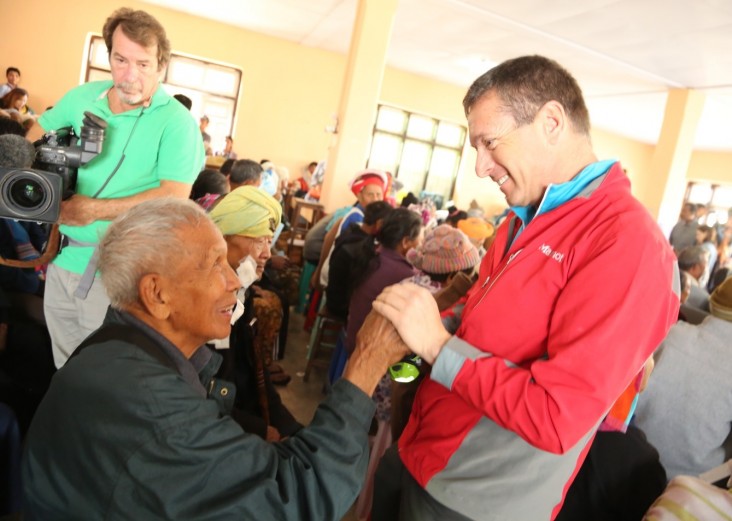
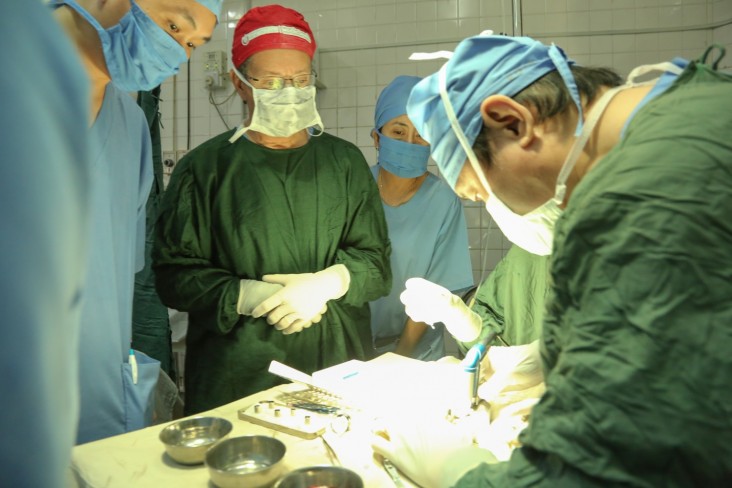
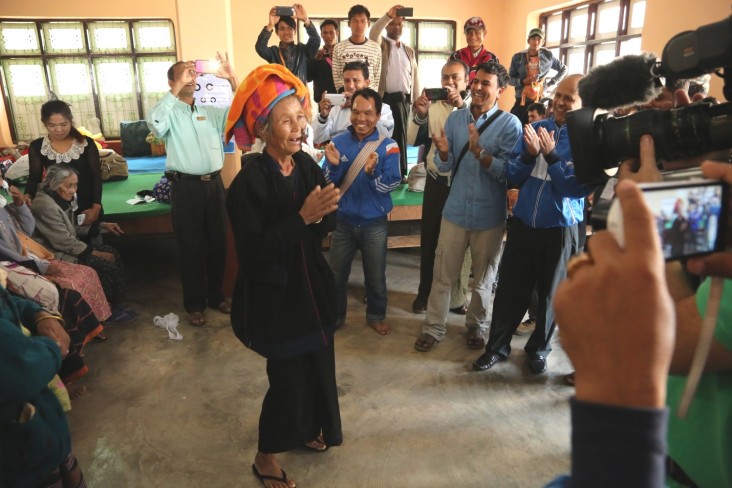
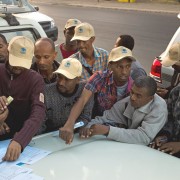

Comment
Make a general inquiry or suggest an improvement.